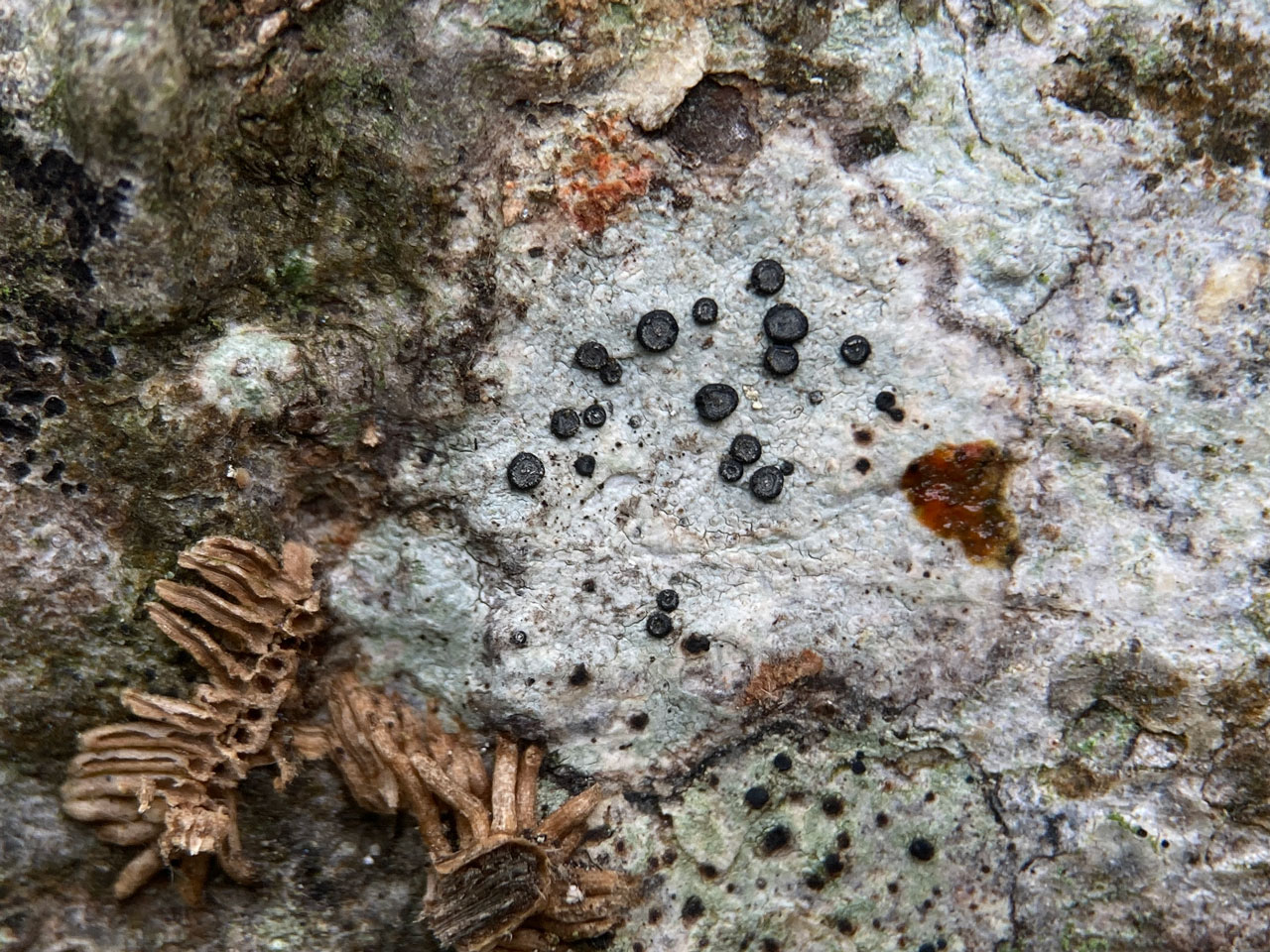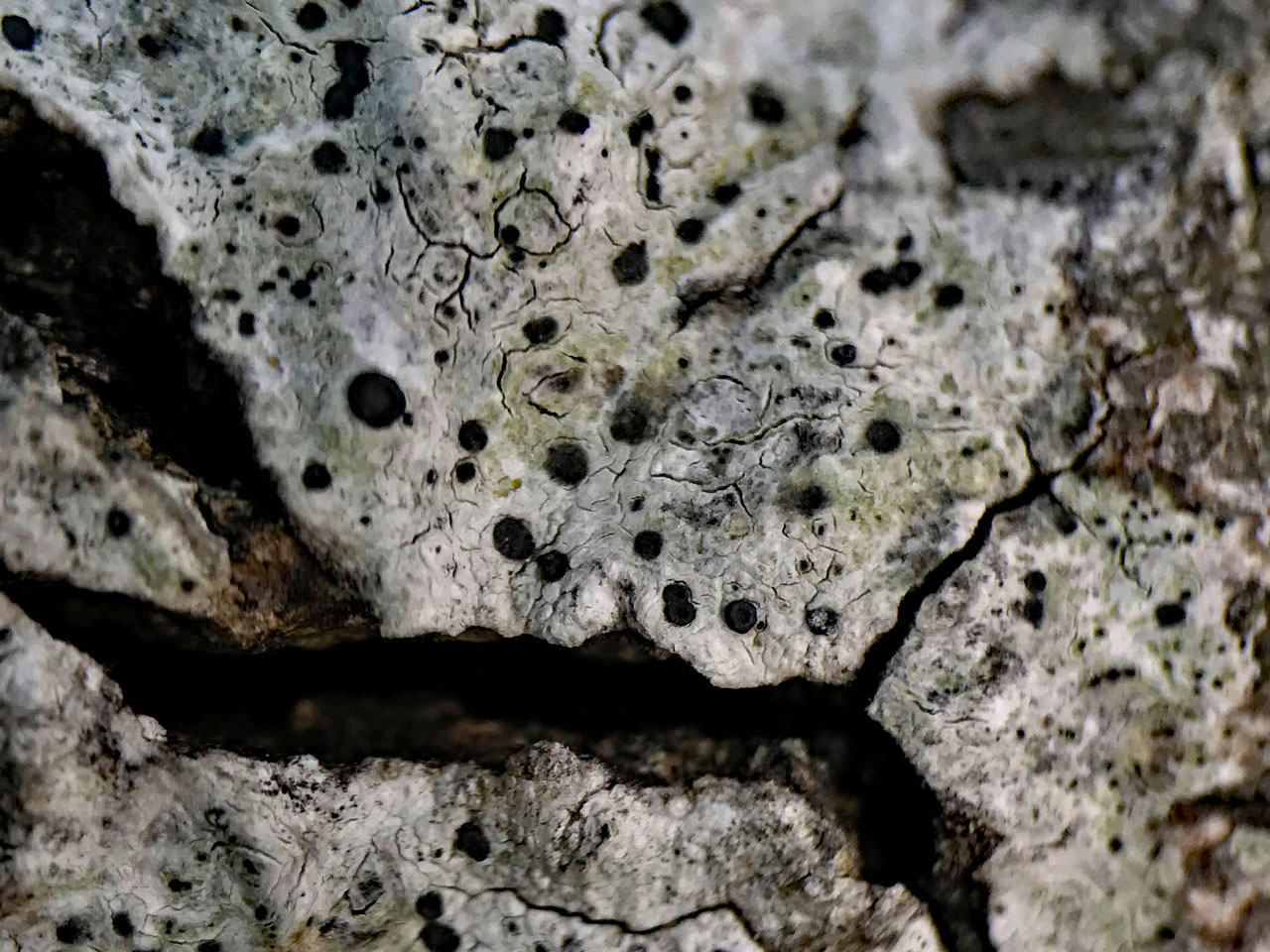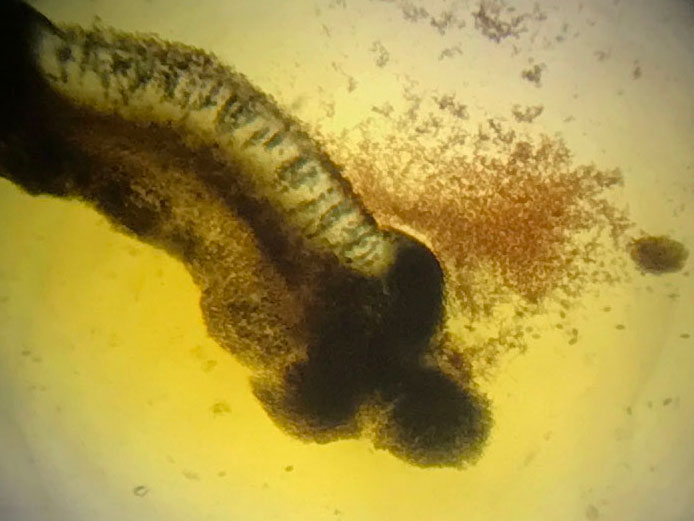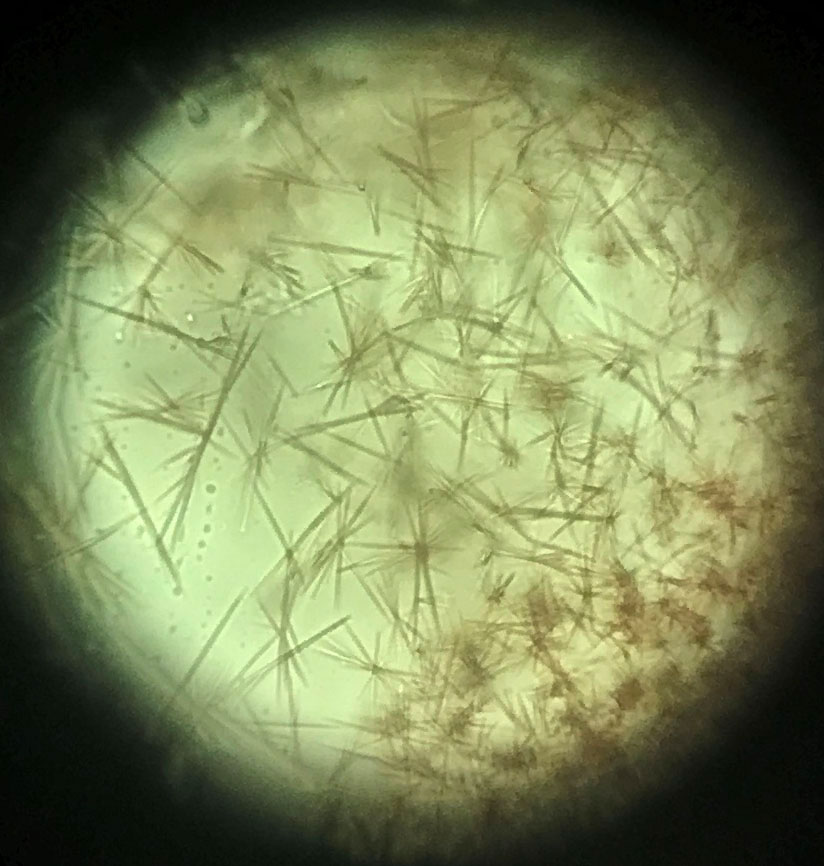Buellia erubescens
A woodland lichen of smooth bark on older trees, which is widespread in the Scottish Highlands but very rare to the south. Similar to the more widespread Buellia disciformis, but it has pruinose young apothecia, a K+ yellow→ red (crystals) spot test (norstictic acid) and rounded spore apices.
Thallus immersed to thin and superficial, white to pale grey, smooth to rimose-cracked or slightly wrinkled, usually delimited by a black prothallus; medulla I–. Apothecia 0.4–1.6 mm diam., sessile; disc flat to slightly convex, usually pruinose at least when young; margin prominent and usually persistent; epithecium brown; hymenium without oil droplets; hypothecium dark brown. Ascospores 14–20 × 6–9 µm, 1-septate, apices rounded, wall evenly pigmented, finely warted. Conidia 6–8 × 0.5–1 µm, straight. Thallus C–, K+ yellow→ red (crystals), Pd+ yellow-orange, UV– (atranorin, norstictic acid and traces of stictic acid complex); rarely K+ yellow, Pd± yellow, UV– (lacking norstictic acid).
Distinguished from Buellia disciformis by the absence of hymenial oil droplets, the rounded, evenly pigmented ascospore apices, and the normally K+ red (crystals) thallus. The rare Buellia sanguinolenta also has a K+ yellow→ red (crystals) spot test, but differs from B. erubescens by the presence of numerous oil droplets in the hymenium. The presence of pruinose young apothecia is a useful field character for spotting this species.
On ± smooth bark, rarely on lignum, mainly confined to ancient woodlands.

Widespread in the Scottish Highlands but very rare in the rest of Britain and W. Ireland.
Widespread in old growth woodlands in the Scottish Highlands, especially in central inland woods. Local threats from the loss of woodland to over grazing and conversely increased shade with poorly planned grazing removal. Very rare to the south, with apparently small and vulnerable populations, but potentially somewhat overlooked for Buellia disciformis here.
Britain: Notable
Wales: Near Threatened
Cannon, P., Prieto, M., Coppins, B., Sanderson, N., Scheidegger, C. & Simkin, J. (2021). Caliciales: Caliciaceae, including the genera Acolium, Amandinea, Buellia, Calicium, Diploicia, Diplotomma, Endohyalina, Monerolechia, Orcularia, Pseudothelomma, Rinodina and Tetramelas. Revisions of British and Irish Lichens 15: 1-35.
Text by Neil A. Sanderson based on Cannon et al (2021).




